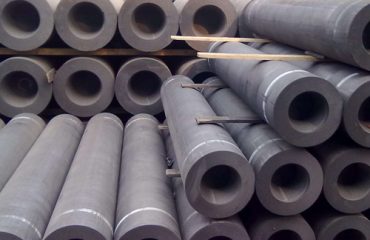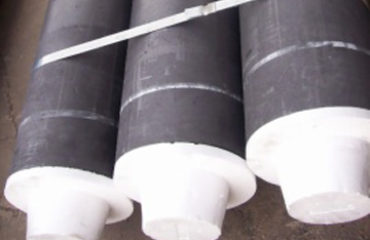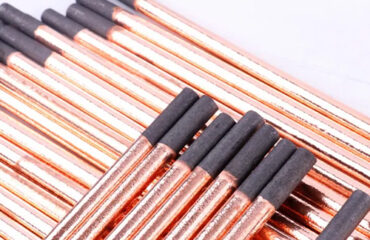Graphite electrodes as early as 1810, the Humphry Davy made use of charcoal to generate electricity to produce an arc of carbon electrode, opened the use of carbon materials as a high-temperature conductive electrode broad prospects, 1846 State (Stair) and Edward (Edwards) With coke powder and sucrose mixed with pressure molding, and roasting at high temperature to create another carbon electrode, then the carbon electrode immersed in a concentrated sugar syrup to improve its bulk density, they obtained the production of this electrode patent. Bolosi (C. F. Brush) and Lauren (W. H. Lawrence) of Cleveland (Cleveland), USA, were successfully developed with Calcined Petroleum coke in 1877. 1899 Plichard (O. G. Pritchard) first reported on the method of producing natural graphite electrodes using Ceylon natural graphite as raw materials. The normal power graphite electrode 1896 Kastner (H. Y. Gastner) was patented using electric power to heat the carbon electrodes directly to the high temperature and to produce a better synthetic graphite electrode than the natural graphite electrodes.
1897 American Emery Company (Carborundum Co.) The Acheson (E. G. Acheson) manufactured the first batch of graphite electrodes with petroleum coke as raw materials in the production of carborundum resistance furnaces, the product being 22mmx32mmx380mm, the artificial graphite electrode, which was then used for electrochemical industrial production of caustic soda, on the basis of which the “Acheson” was designed. Graphite furnace will be produced by petroleum coke Electrode and a small amount of resistance material (metallurgical coke particles) to form “furnace core resistance”, after the electricity generated high temperature, so that the carbon electrode made of petroleum coke at high temperature “graphitization” to obtain the artificial graphite electrode. At the end of 19th century, the Frenchman Eroux (P. L. T. Heroult) invented the direct arc furnace, which was used for smelting calcium carbide and ferroalloy production, and for the first time in 1899, the graphite electrode arc furnace required a certain number of high-temperature resistant conductive electrodes. Although before and after 1900 Acheson Graphite Co. (Acheson Graphite Co.) Can be linked to the sale of electrodes, but at this time can only produce small specifications of graphite electrode, in the early 20th century electric furnace steelmaking mainly using anthracite as raw materials of carbon electrodes or natural graphite as raw materials of natural graphite electrode. The process of producing carbon electrodes or natural graphite electrodes is relatively simple, and 1910 has supplied the market with a carbon electrode of up to 610mm in diameter. However, the excellent properties of graphite electrodes and the continuous improvement of manufacturing process, large-scale graphite electrode production and price decline, the electric furnace steelmaking industry has gradually changed to graphite electrodes, the use of carbon electrodes or natural graphite electrode gradually reduced, the vast majority of eaf in the the 1960s after the use of graphite electrodes. The 1914-1918-year-old graphite electrode diameter is only 356mm, 1924 began to produce a diameter of 406mm graphite electrode, 1930 has been extended to 457mm, 1937 added to 508mm, and soon produced the diameter of 559mm, 610mm, 660mm, 711mm, 762mm large size graphite electrode.
The graphite electrode diameter of the world’s largest eaf used in the 1980s was 813mm. After the Second World War, the raw material quality, equipment and manufacturing process of graphite electrodes were continuously improved, and the high power and ultra-high power graphite electrodes were successfully developed in the 60-70 years of 20th century, with the need of increasing the input power of EAF steelmaking. Due to the continuous improvement of graphite electrode quality and the improvement of EAF steelmaking process, the consumption of graphite electrode per ton of EAF steel has been reduced from the 70 ‘s 6~8kg to the 80 ‘s 4~6kg (Ordinary Power electric furnace), The electrode consumption of a large electric furnace with ultra-high power graphite electrodes has been reduced to 2.5kg or so, and ultra high Power DC electric arc furnace (only 1 graphite electrodes) per ton of steel graphite electrode consumption can be reduced to 1. About 5kg. In the late 80 the world’s industrial developed countries EAF steelmaking industry most of the tonnage has been raised to 80~200t, so a large number of use is the diameter 550~750mm high power or ultra-high power graphite electrodes.



